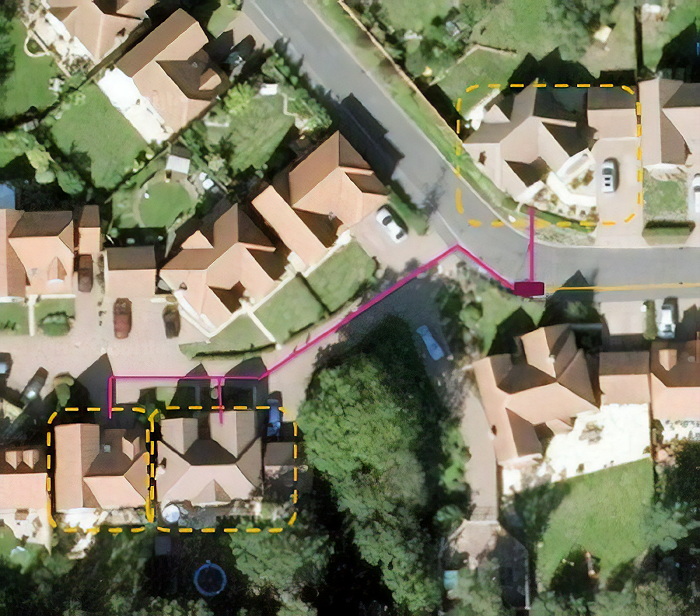Next Gen 1Gbps G.Fast Copper Broadband Standard Gains Final Approval
The International Telecommunication Union (ITU-T) has now given its final approval to the next generation G.fast (ITU G.9701) broadband standard, which in a few short years could replace BTOpenreach’s ‘up to’ 80Mbps FTTC service and potentially deliver up to around ten times the speed using similar hybrid fibre lines (mixed fibre optic and shorter copper).
The G.fast technology works a bit like BT’s existing Fibre-to-the-Cabinet approach, except that in an FTTC setup the fibre optic cable is only taken as far as your local street cabinet and the remaining connection into homes is then done using VDSL2 technology over your existing copper telephone cable (most premises are within around 400 metres of a cabinet but some live up to around 2000 metres away).
Advertisement
 By comparison G.fast uses significantly more radio spectrum and must thus works over a much shorter run of copper cable (sub-250m). As a result the high capacity fibre optic line has to be taken even closer to homes, usually as far as a smaller remote node or distribution point (FTTdp / FTTrN) that can be built on top of a telegraph pole or possibly even underground.
By comparison G.fast uses significantly more radio spectrum and must thus works over a much shorter run of copper cable (sub-250m). As a result the high capacity fibre optic line has to be taken even closer to homes, usually as far as a smaller remote node or distribution point (FTTdp / FTTrN) that can be built on top of a telegraph pole or possibly even underground.
BT conducted a field trial of mock-up G.fast technology earlier this year (full details here and here) and on the shortest 19 metres line they managed to achieve aggregated speeds of around 1000Mbps (Megabits per second), which equated to 231Mbps upload and 786Mbps download. By comparison the “long” 66 metres line produced 200Mbps upload and 696Mbps download.
However BT’s trial was technically more of an extended lab test because at the time the final hardware was not available and the related standard (ITU G.9700 and G.9701) had yet to be fully completed. But since then we have started to see the first commercial G.fast chipsets emerge and now the standard has also been given final approval, which means that telecoms operators like BT can start to prep trials that can better reflect real-world deployments.
Dr Hamadoun I. Touré, Secretary-General, ITU:
“The time from G.fast’s approval to its implementation looks set to be the fastest of any access technology in recent memory. A range of vendors has begun shipping G.fast silicon and equipment, and service providers’ lab and field trials are well underway.”
In related news the Broadband Forum has begun developing a test suite and certification programme for G.fast systems. The test suite will provide for interoperability, functional and performance testing. A beta-trial of the certification programme is planned for mid-2015, and certified G.fast implementations are expected to appear on the market before the end of 2015.
Advertisement
Incumbent telecoms operators with a lot of copper lines in their network(s) will see G.fast as a means of delaying the need to spend on a pure fibre optic (FTTH/P) deployment, not least because it means they don’t need to replace the existing copper run into homes (this can add a huge cost to their deployments). On the other hand the G.fast upgrade would not be cheap and could also take a while to roll-out.
At the same time it’s probably not realistic to expect the Gigabit speeds, which are often promoted when talking about G.fast, not least because we still don’t know precisely how BT will deploy it (e.g. they might set an upper range of 200-250 or 100 metres etc.) and the need to co-exist with current VDSL2 (FTTC) services can also have a huge impact. Instead speeds of between 200Mbps and 500Mbps are probably more realistic.
On top of that we anticipate that G.fast won’t be deployed everywhere, unless public money is used to support its roll-out of course, and there will still be locations where FTTP is deployed instead. Never the less we think it’ll still be 2016/17 before we see the start of a commercial deployment.
In the meantime it’s interesting to note that the ITU-T Study Group 15 has already started work on an extended set of features for G.fast, “targeting performance enhancements which will include additions to its range of low-power states“. Related features are likely to be available for incorporation into related deployments from early as July 2015.
Advertisement
Mark is a professional technology writer, IT consultant and computer engineer from Dorset (England), he also founded ISPreview in 1999 and enjoys analysing the latest telecoms and broadband developments. Find me on X (Twitter), Mastodon, Facebook, BlueSky, Threads.net and Linkedin.
« TalkTalk and BT in Comedy Squabble Over Promotional Rocket Graphics
















































Comments are closed